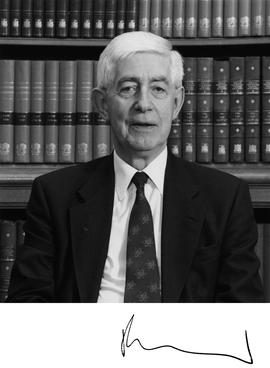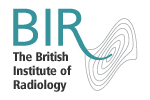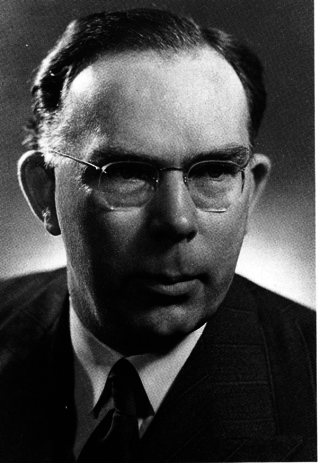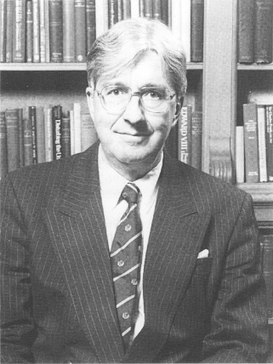Sir Peter James Kerley KCVO CBE (1900–1979) was an Irish radiologist famous for his role in the lung surgery of King George VI and the naming of the radiological sign in heart failure, Kerley lines.
Kakarla Subba Rao was an Indian radiologist who served as the first director of Nizam's Institute of Medical Sciences, Hyderabad. For his contributions to the field of medicine, Rao was conferred Padma Shri in 2000, the fourth highest civilian award by the Government of India. He was also the founder and president of the Telugu Association of North America.

Peter Neil Temple Wells CBE DSc FMedSci FREng FIET FInstP FLSW FRS was a British medical physicist who played a major role in the application of ultrasound technology in medicine.
Professor Dame Janet Elizabeth Husband is Emeritus Professor of Radiology at the Institute of Cancer Research. She had a career in diagnostic radiology that spanned nearly 40 years, using scanning technology to diagnose, stage, and follow-up cancer. She continues to support medicine and research as a board member and advisor for various organisations.
Ian Robert Young was a British medical physicist, known for his work in the field of magnetic resonance imaging (MRI).

The British Institute of Radiology (BIR) is a radiology society and charity based in London, United Kingdom. It is the oldest institute of its kind in the world, forming on 2 April 1897.
Anthony Seaton qualified in medicine from Cambridge University in 1962, and after training in Liverpool was appointed assistant professor of medicine at the University of West Virginia, USA in 1969. He became consulting chest physician at the University of Wales in 1971, and was named director of the Institute of Occupational Medicine at Edinburgh in 1978. Seaton became the head of the Department of Environmental and Occupational Medicine at the University of Aberdeen in 1988 and on retiring in 2003 became emeritus professor. He continues to write and teach and has active research interests in the causes of asthma and occupational illness.

James Ralston Kennedy "RP" Paterson, CBE, MC, MD, FRCSEd, FRCR, DMRE (Cantab) was a radiologist and oncologist in Scotland. Along with Herbert Parker, pioneered the development of the Paterson-Parker rules for the Radium Dosage System also known as the Manchester system.

Donald Bernard Longmore, OBE, FRCSEd, FRCR was a British consultant surgeon and clinical physiologist. He was one of the team who performed the first heart transplant in the United Kingdom.
Professor Antony Clifford Dornhorst CBE, FRCP (1915–2003) was a British physician and medical educator, described by The Guardian as "one of the outstanding academic clinician-scientists of his generation".
Peter Orchard Williams was a British physician, who served as Director of the Wellcome Trust, and of the Wellcome Institute for the History of Medicine.

Edward Osmund Royle Reynolds, CBE, FRCP, FRCOG, FRCPCH, FMedSci, FRS, was a British paediatrician and Neonatologist who was most notable for the introduction of new techniques intended to improve the survival of newborns, especially those with respiratory failure, and for a series of papers regarding the value of techniques such as ultrasound imaging, nuclear magnetic resonance spectroscopy, and near infrared spectroscopy in determining the development and response to injury of the infant brain after birth.
John Bernard Lloyd Howell was a British physician.
Professor Lesley Ann Page CBE, MSc, BA, RM, RMT is a British midwife and academic, and was President of the Royal College of Midwives.
Owen Lyndon Wade (1921-2008) was a British medical researcher and academic, described by the Royal College of Physicians as "one of the founding fathers of clinical pharmacology and therapeutics in the UK".
David Abraham Goitein Galton (1922-2006) was a British physician, specialising in haematology.
Professor Raymond Leonard Powles CBE, FRCP, FRCPath, known as Ray, is a British physician.

Professor Robert Lewis Maynard CBE, FRCP, FRCPath, FFOM is a British toxicologist.

Michael Francis Oliver CBE, FRCP, FRSE (1925–2015) was a 20th-century British cardiologist who served as president of the Royal College of Physicians of Edinburgh for the period 1985 to 1988. He made major advances in identifying the causes of heart disease.
Brian Worthington was the first radiologist to be elected a Fellow of the Royal Society and is acknowledged as a pioneer in clinical magnetic resonance imaging. He was born in Oldham, England and was educated at Hulme Grammar School, training at Guy's Hospital after graduating in physiology and medicine. After graduation his career developed rapidly, particularly in the field of MRI research and he was subsequently admitted as a Fellow of the Royal College of Radiologists.







